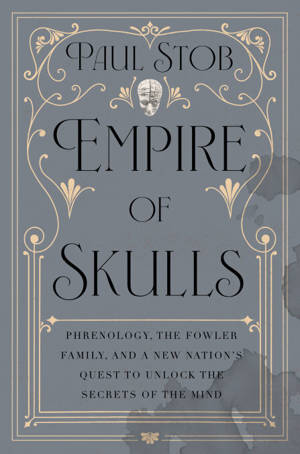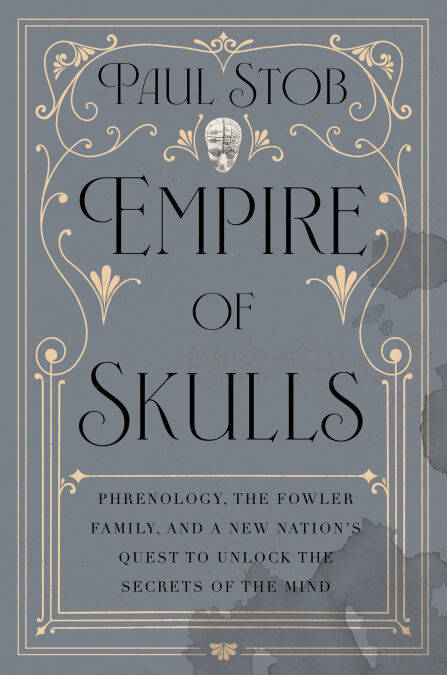
Je cadeautjes zeker op tijd in huis hebben voor de feestdagen? Kom langs in onze winkels en vind het perfecte geschenk!
- Afhalen na 1 uur in een winkel met voorraad
- Gratis thuislevering in België vanaf € 30
- Ruim aanbod met 7 miljoen producten
Je cadeautjes zeker op tijd in huis hebben voor de feestdagen? Kom langs in onze winkels en vind het perfecte geschenk!
- Afhalen na 1 uur in een winkel met voorraad
- Gratis thuislevering in België vanaf € 30
- Ruim aanbod met 7 miljoen producten
Zoeken
Empire of Skulls E-BOOK
Phrenology, the Fowler Family, and a New Nation's Quest to Unlock the Secrets of the Mind
Paul Stob
E-book | Engels
€ 29,56
+ 29 punten
Uitvoering
Omschrijving
An absorbing tale of science and showmanship, ideology and enterprise, that provides not just a fascinating history of our country, but also crucial insight into the deep currents that continue to propel modern life
During the contentious and progressive antebellum era, the Fowler family preached a gospel of self-improvement to a nation eager to embrace its foundational beliefs. For the first time, this new “science” of phrenology offered all Americans the ability to improve their station by unlocking their innate mental and emotional truths. Revered politicians, quirky celebrities, infamous criminals, and social outcasts all found their way to the Fowlers for skull readings.
Brimming with the energy to change the world, the Fowlers connected phrenology to practically every aspect of life in the young nation—from abolition to women’s rights, temperance to prison reform, spiritualism and mesmerism to vegetarianism and sexual education. But there was a dark side to this fad and to the Fowlers, and soon nefarious forces co-opted this once-hopeful sensation to justify racism and xenophobia.
Phrenology’s complex history stands as a commentary on the dreams and follies of the American republic. Though phrenology (and the Fowlers) ran afoul of the tide of history, its aspirational insistence on an individual’s ability to improve oneself became embedded in the fabric of the nation.
During the contentious and progressive antebellum era, the Fowler family preached a gospel of self-improvement to a nation eager to embrace its foundational beliefs. For the first time, this new “science” of phrenology offered all Americans the ability to improve their station by unlocking their innate mental and emotional truths. Revered politicians, quirky celebrities, infamous criminals, and social outcasts all found their way to the Fowlers for skull readings.
Brimming with the energy to change the world, the Fowlers connected phrenology to practically every aspect of life in the young nation—from abolition to women’s rights, temperance to prison reform, spiritualism and mesmerism to vegetarianism and sexual education. But there was a dark side to this fad and to the Fowlers, and soon nefarious forces co-opted this once-hopeful sensation to justify racism and xenophobia.
Phrenology’s complex history stands as a commentary on the dreams and follies of the American republic. Though phrenology (and the Fowlers) ran afoul of the tide of history, its aspirational insistence on an individual’s ability to improve oneself became embedded in the fabric of the nation.
Specificaties
Betrokkenen
- Auteur(s):
- Uitgeverij:
Inhoud
- Aantal bladzijden:
- 336
- Taal:
- Engels
Eigenschappen
- Productcode (EAN):
- 9781640096844
- Verschijningsdatum:
- 13/04/2026
- Uitvoering:
- E-book
- Beveiligd met:
- Adobe DRM
- Formaat:
- ePub

Alleen bij Standaard Boekhandel
+ 29 punten op je klantenkaart van Standaard Boekhandel
Beoordelingen
We publiceren alleen reviews die voldoen aan de voorwaarden voor reviews. Bekijk onze voorwaarden voor reviews.









